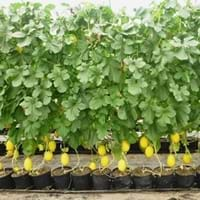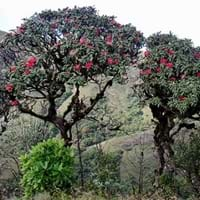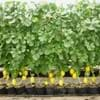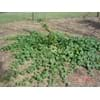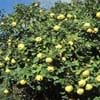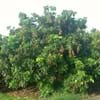Life Span
Annual
Perennial
Origin
Hybrid origin, Africa
Europe, Southern Asia, Southeastern Asia, India, China
Types
Fonzy melon
cinnamomeum, zeylanicum, delavayi
Number of Varieties
Not Available
Habitat
Mediterranean region, Subtropical climates, Temperate Regions, Tropical regions
Dappled Shade, Woodlands
USDA Hardiness Zone
Not Available
7-9
Sunset Zone
2a, 2b, 3a, 3b, 4, 5, 6, 7, 8, 9, 10, 11, 12, 13, 14, 15, 16, 17, 18, 19, 20, 21, 22, 23, 24
H1, 8, 9, 14, 15, 16, 17, 23, 24
Habit
Vining/Climbing
Upright/Erect
Flower Color
Yellow
White, Red, Pink
Flower Color Modifier
Bicolor
Bicolor
Fruit Color
White, Yellow, Gold, Tan, Sandy Brown
Brown, Chocolate
Leaf Color in Spring
Green, Light Green
Green, Dark Green
Leaf Color in Summer
Green, Light Green
Dark Green
Leaf Color in Fall
Green, Light Green
Dark Green
Leaf Color in Winter
Light Green
Dark Green
Plant Season
Summer, Fall
Spring, Summer, Fall, Winter
Sunlight
Full Sun
Full Sun, Partial Sun
Growth Rate
Very Fast
Medium
Type of Soil
Loam
Loam, Sand
The pH of Soil
Neutral
Acidic
Soil Drainage
Well drained
Average
Bloom Time
Indeterminate
Early Spring, Spring, Late Spring
Tolerances
Drought
Not Available
Where to Plant?
Container, Ground
Ground
How to Plant?
Seedlings, Transplanting
Seedlings
Plant Maintenance
Medium
Medium
Watering Requirements
Water Deeply, when new, water every week
Reduce water once established
In Summer
Lots of watering
Lots of watering
In Spring
Moderate
Moderate
In Winter
Average Water
Average Water
Soil Type
Loam
Loam, Sand
Soil Drainage Capacity
Well drained
Average
Sun Exposure
Full Sun
Full Sun, Partial Sun
Pruning
Remove damaged leaves, Remove dead branches, Remove dead leaves
Prune after flowering, Prune if you want to improve plant shape, Remove dead or diseased plant parts
Fertilizers
All-Purpose Liquid Fertilizer
Doesn't require fertilization when grown in rich soil, Fertilize in early spring, fertilize in winter, Mulch
Pests and Diseases
Red blotch
Phytophthora, Thripes
Plant Tolerance
Drought
Not Available
Flower Petal Number
Single
Single
Foliage Texture
Coarse
Coarse
Foliage Sheen
Matte
Glossy
Attracts
Not Available
Butterflies
Allergy
Asthma, Eczema, Headache, Itchy eyes, Sore eyes
Not Available
Aesthetic Uses
Not Used For Aesthetic Purpose
Showy Purposes
Beauty Benefits
Improve skin condition, Skin Problems
Not Available
Environmental Uses
Air purification
Insect Repellent, Shadow Tree, Windbreak
Medicinal Uses
Antioxidants, Diabetes, Eye Problems, High blood pressure, Nutrients
antimicrobial, Cancer, Dermatitis
Part of Plant Used
Fruits
Flowers, Leaves
Other Uses
Employed in herbal medicine, Used As Food
Used as fuel, Used as insect repellent, Used as Ornamental plant, Used for its medicinal properties
Used As Indoor Plant
Yes
No
Used As Outdoor Plant
Yes
Yes
Garden Design
Edible, Fruit / Fruit Tree, Herb / Vegetable, Vine
Feature Plant, Mixed Border, Topiary / Bonsai / Espalier
Botanical Name
CUCUMIS melo 'Amy'
RHODODENDRON arboreum
Common Name
Canary Melon
Chalan, Rose Tree, Tree Rhododendron
In Hindi
कैनरी तरबूज
लाल बुरांश
In German
Canary Melon
Rhododendron arboreum
In French
Melon Canaries
Rhododendron arboreum
In Spanish
Melón Canarias
arboreum rododendro
In Greek
Κανάριοι Πεπόνι
Rhododendron arboreum
In Portuguese
Canary Melon
arboreum Rhododendron
In Polish
Canary Melon
różanecznik drzewiasty
In Latin
Canary cucumis
Prunus arborea
Phylum
Streptophyta
Magnoliophyta
Class
Magnoliopsida
Magnoliopsida
Order
Cucurbitales
Ericales
Family
Cucurbitaceae
Ericaceae
Genus
Cucumis
Rhododendron
Clade
Not Available
Angiosperms, Asterids, Eudicots
Tribe
Not Available
Not Available
Subfamily
Not Available
Not Available
Number of Species
Not Available
Not Available
Importance of Canary Melon and Rhododendron Arboreum
Want to have the most appropriate plant for your garden? You might want to know the importance of Canary Melon and Rhododendron Arboreum. Basically, these two plants vary in many aspects. Compare Canary Melon and Rhododendron Arboreum as they differ in many characteristics such as their life, care, benefits, facts, etc. Every gardener must at least have the slightest clue about the plants he wants to plant in his garden. Compare their benefits, which differ in many ways like facts and uses. The medicinal use of Canary Melon is Antioxidants, Diabetes, Eye Problems, High blood pressure and Nutrients whereas of Rhododendron Arboreum is antimicrobial, Cancer and Dermatitis. Canary Melon has beauty benefits as follows: Improve skin condition and Skin Problems while Rhododendron Arboreum has beauty benefits as follows: Improve skin condition and Skin Problems.
Compare Facts of Canary Melon vs Rhododendron Arboreum
How to choose the best garden plant for your garden depending upon its facts? Here garden plant comparison will help you to solve this query. Compare the facts of Canary Melon vs Rhododendron Arboreum and know which one to choose. As garden plants have benefits and other uses, allergy is also a major drawback of plants for some people. Allergic reactions of Canary Melon are Asthma, Eczema, Headache, Itchy eyes and Sore eyes whereas of Rhododendron Arboreum have Not Available respectively. Having a fruit bearing plant in your garden can be a plus point of your garden. Canary Melon has showy fruits and Rhododendron Arboreum has no showy fruits. Also Canary Melon is not flowering and Rhododendron Arboreum is not flowering . You can compare Canary Melon and Rhododendron Arboreum facts and facts of other plants too.
